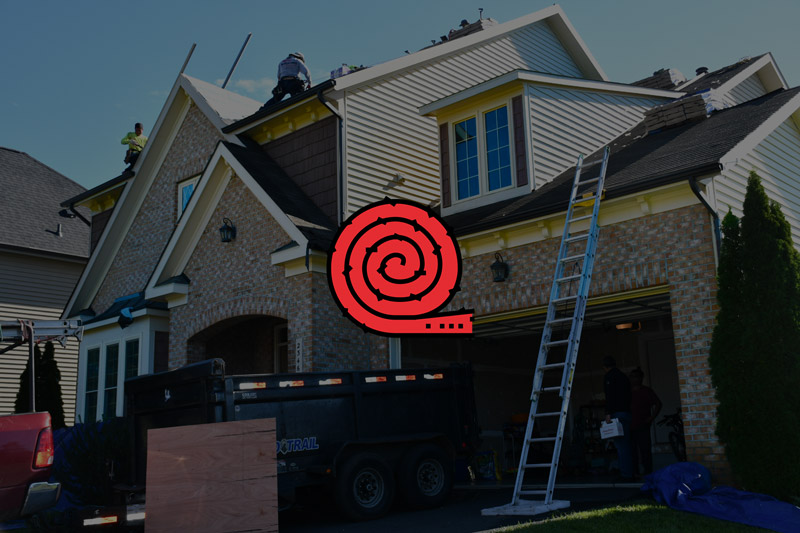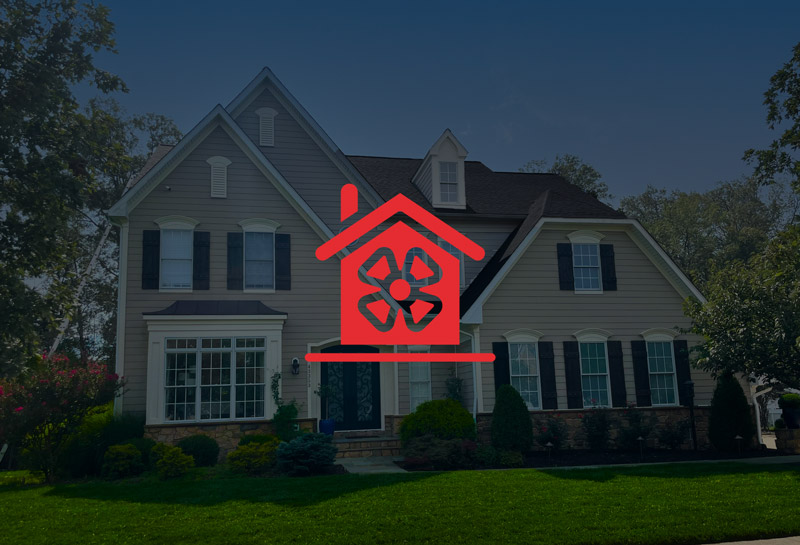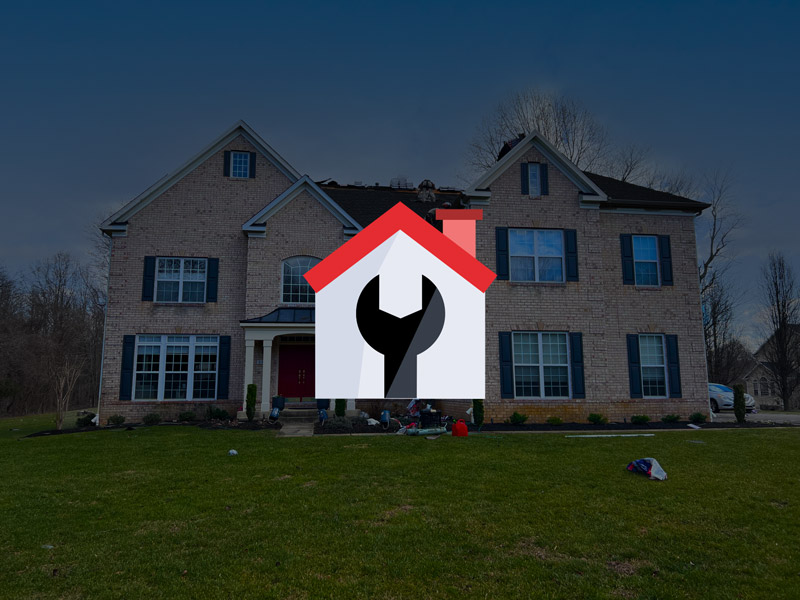Roof Energy Efficiency: Maximizing Sustainability and Savings
Roofing energy efficiency is a crucial aspect of creating an environmentally sustainable and cost-effective home. With the increasing emphasis on reducing energy consumption and minimizing carbon footprints, understanding the importance of energy efficiency in roofing systems is paramount. This article aims to provide a comprehensive overview of the subject, guiding homeowners and contractors towards making informed decisions about their roofing choices.

Understanding Roofing Energy Efficiency
Definition and Impact of Roofing Energy Efficiency
Roofing energy efficiency refers to the ability of a roofing system to effectively minimize energy consumption and optimize thermal performance. By employing various techniques and materials, energy-efficient roofs reduce heat transfer, maintain comfortable indoor temperatures, and decrease the reliance on heating and cooling systems. This results in lower energy bills and reduced environmental impact.
Insulation Materials and Their R-Value
Insulation plays a critical role in roofing energy efficiency. Insulation materials with high R-values, such as fiberglass, spray foam, or cellulose, effectively resist heat flow and prevent thermal energy loss. The R-value measures the insulation’s resistance to heat transfer, with higher values indicating greater efficiency in reducing energy consumption.
Reflective Properties of Roofing Materials
The choice of roofing materials significantly impacts energy efficiency. Reflective roofing materials, such as cool roofs or those with high solar reflectance, minimize heat absorption and reduce the need for air conditioning. Metal roofs, for example, offer excellent reflectivity, while clay or concrete tiles provide thermal mass properties that help regulate indoor temperatures.
Ventilation and Airflow Considerations
Proper ventilation and airflow are essential for maintaining roofing energy efficiency. Adequate ventilation systems, including ridge vents, soffit vents, and gable vents, facilitate the exchange of hot and cool air, preventing heat buildup in the attic space. This helps in reducing the strain on cooling systems and enhancing overall energy efficiency.

Evaluating Your Current Roofing System
Conducting a Comprehensive Assessment of Your Existing Roofing System’s Energy Efficiency
To ensure optimal roofing energy efficiency, it is crucial to evaluate your current roofing system. This assessment will help identify any potential areas for improvement and address common energy efficiency issues.
Identifying Common Energy Efficiency Issues in Roofs
Inspect your roof for common energy efficiency issues, such as inadequate insulation, air leaks, or damaged roofing materials. These issues can result in heat loss during winter and heat gain during summer, compromising energy efficiency. Addressing these issues promptly can significantly improve the overall performance of your roofing system.
Assessing Insulation Quality and Identifying Potential Areas for Improvement
Evaluate the quality and effectiveness of your roof insulation. Check for proper installation and insulation thickness to ensure optimal energy efficiency. Identify any gaps, compression, or deterioration in the insulation that might lead to energy loss. By identifying areas that require improvement, you can enhance the insulation’s ability to minimize heat transfer and improve energy efficiency.
Analyzing the Reflective Properties of the Roofing Materials
Consider the reflective properties of your roofing materials. Roofing materials with higher reflectivity, such as cool roofs or those with high solar reflectance, help deflect sunlight and reduce heat absorption. This can significantly improve energy efficiency by minimizing the need for air conditioning. Assess the current roofing material’s reflectivity and explore options for more energy-efficient alternatives if necessary.

Upgrading Roof Insulation for Optimal Energy Efficiency
Exploring Different Types of Insulation Materials for Roofs
When aiming to enhance roofing energy efficiency, upgrading roof insulation is a crucial step. Several insulation materials can effectively minimize heat transfer and improve energy performance.
Fiberglass Insulation
Fiberglass insulation is a commonly used material for roof insulation due to its affordability and effectiveness. It consists of fine glass fibers that trap air, reducing heat flow. Fiberglass insulation is available in rolls, batts, or loose-fill forms, offering flexibility in installation and coverage.
Spray Foam Insulation
Spray foam insulation is another excellent option for maximizing energy efficiency. It is applied as a liquid that expands and solidifies, creating a seamless insulating layer. Spray foam insulation fills gaps, cracks, and hard-to-reach areas, providing exceptional air sealing properties and thermal resistance.
Cellulose Insulation
Cellulose insulation is made from recycled paper products treated with fire-retardant chemicals. It offers good thermal performance and helps reduce energy consumption. Cellulose insulation is available as loose-fill or dense-packed, making it suitable for both new construction and retrofit projects.
Determining the Appropriate Insulation Type Based on Climate and Specific Requirements
Choosing the right insulation type is essential for achieving optimal energy efficiency in roofing systems. Factors such as climate, local building codes, and specific requirements should be considered. Consultation with a professional contractor can provide valuable guidance in selecting the most suitable insulation material for your specific needs.
Proper Installation Techniques and Considerations for Achieving Maximum Effectiveness
Proper installation is crucial for maximizing the effectiveness of roof insulation. It ensures a continuous and airtight barrier, minimizing thermal bridging and heat loss. Attention should be given to proper sealing of gaps, avoiding compression of insulation, and providing adequate ventilation to prevent moisture buildup. Following manufacturer guidelines and utilizing the expertise of a qualified contractor will help ensure proper installation techniques are employed.

Selecting Energy-Efficient Roofing Materials
Comparing Roofing Materials Based on Their Energy Efficiency Attributes
When it comes to enhancing roofing energy efficiency, selecting the right roofing material is crucial. Different materials offer varying levels of energy performance. Let’s explore some commonly used options:
Asphalt Shingles
Asphalt shingles are a popular choice due to their affordability and versatility. While they may not be the most energy-efficient option, advancements in technology have led to the development of cool asphalt shingles that incorporate reflective properties, reducing heat absorption and improving energy efficiency.
Metal Roofing
Metal roofs are known for their exceptional longevity and durability. They have excellent solar reflectance properties, helping to reduce heat transfer to the building’s interior. Metal roofs can also be combined with insulation layers to enhance energy efficiency further.
Clay or Concrete Tiles
Clay or concrete tiles are renowned for their thermal mass properties. They absorb heat during the day and release it gradually at night, helping to regulate indoor temperatures. This natural cooling effect can reduce the need for air conditioning, resulting in improved energy efficiency.
Green Roofs
Green roofs, or vegetative roofs, offer a unique approach to energy efficiency. They consist of a layer of vegetation and soil, providing natural insulation and reducing heat island effect. Green roofs can improve energy efficiency by reducing heat gain, enhancing air quality, and mitigating stormwater runoff.
Understanding the Benefits and Limitations of Each Material
While each roofing material has its benefits, it’s essential to consider their limitations as well. Factors such as cost, maintenance requirements, weight, and compatibility with your home’s structural integrity should be taken into account when selecting the most suitable option for your roofing energy efficiency goals.
Choosing the Most Suitable Roofing Material for Your Climate and Energy Goals
When choosing a roofing material, it is crucial to consider your local climate and specific energy goals. For instance, in hot climates, materials with high reflectivity and insulation properties may be more beneficial, while in colder regions, materials with excellent insulation and thermal mass qualities might be preferred. Consulting with a roofing professional can help determine the most suitable material for your specific needs.

Enhancing Ventilation and Airflow
The Role of Proper Ventilation in Maintaining Roofing Energy Efficiency
Proper ventilation plays a crucial role in maintaining optimal roofing energy efficiency. It helps regulate temperature, moisture levels, and airflow within the attic space, preventing heat buildup and reducing the strain on your cooling systems. By ensuring adequate ventilation, you can enhance the overall energy performance of your roofing system.
Types of Ventilation Systems for Roofs
There are several types of ventilation systems commonly used in roofing to promote airflow and ventilation:
Ridge Vents
Ridge vents are installed along the ridge line of the roof. They allow hot air to escape from the attic space, creating a natural flow of cool air from the eaves. Ridge vents work in conjunction with intake vents, such as soffit vents or gable vents, to create a balanced ventilation system.
Soffit Vents
Soffit vents are located in the underside of the eaves, allowing fresh air to enter the attic space. They help maintain proper airflow by drawing in cool air from outside, which displaces the hot air and removes excess moisture. Soffit vents work effectively when combined with exhaust vents, such as ridge vents or gable vents.
Gable Vents
Gable vents are installed on the gable ends of the roof. They facilitate the expulsion of hot air from the attic space, creating a natural flow of air. Gable vents work alongside intake vents to promote proper ventilation and prevent heat buildup.
Strategies for Optimizing Airflow and Preventing Heat Buildup in the Attic Space
To maximize the benefits of ventilation and prevent heat buildup in the attic space, consider the following strategies:
- Ensure proper installation and sealing of vents to prevent air leaks.
- Keep the attic well-insulated to minimize heat transfer between the attic and the living spaces.
- Clear any obstructions, such as debris or insulation, that may hinder airflow through vents.
- Regularly inspect and maintain your ventilation system to ensure its effectiveness

Maintenance and Tips for Sustaining Roofing Energy Efficiency
Regular Inspections and Maintenance Routines to Preserve Roofing Energy Efficiency
Regular inspections and maintenance routines are essential for preserving the energy efficiency of your roofing system. By identifying and addressing potential issues promptly, you can prevent energy loss and maintain optimal performance.
Identifying and Addressing Potential Issues Promptly
Regularly inspect your roof for signs of damage, such as cracked shingles, leaks, or gaps. Address these issues promptly to prevent further damage and energy loss. Pay attention to areas where insulation may have deteriorated or become compressed, compromising its effectiveness. Additionally, check for proper sealing around vents, chimneys, and other roof penetrations to ensure a tight envelope.
Additional Tips and Practices for Maximizing Roofing Energy Efficiency
Keep your roof clean and free of debris, as accumulated leaves or branches can trap moisture and hinder proper drainage, leading to potential energy loss.
Consider adding a reflective coating to your roof to enhance its solar reflectance and reduce heat absorption. These coatings, often called cool roof coatings, can help lower cooling costs and improve energy efficiency.
Install or upgrade attic insulation to meet recommended R-value guidelines for your region. Insulation helps to minimize heat transfer and maintain a comfortable indoor temperature.
Incorporate energy-efficient practices within your home, such as using energy-efficient appliances, sealing air leaks, and optimizing heating and cooling systems. These measures complement the energy efficiency of your roofing system.
Resources for Professional Assistance and Guidance
When it comes to maintaining and improving roofing energy efficiency, it can be beneficial to seek professional assistance. Roofing contractors with expertise in energy efficiency can provide guidance on insulation upgrades, ventilation improvements, and other measures specific to your roofing system. Additionally, energy efficiency programs or organizations in your region may offer resources and incentives for energy-saving initiatives.
View More Articles
Please Share!











